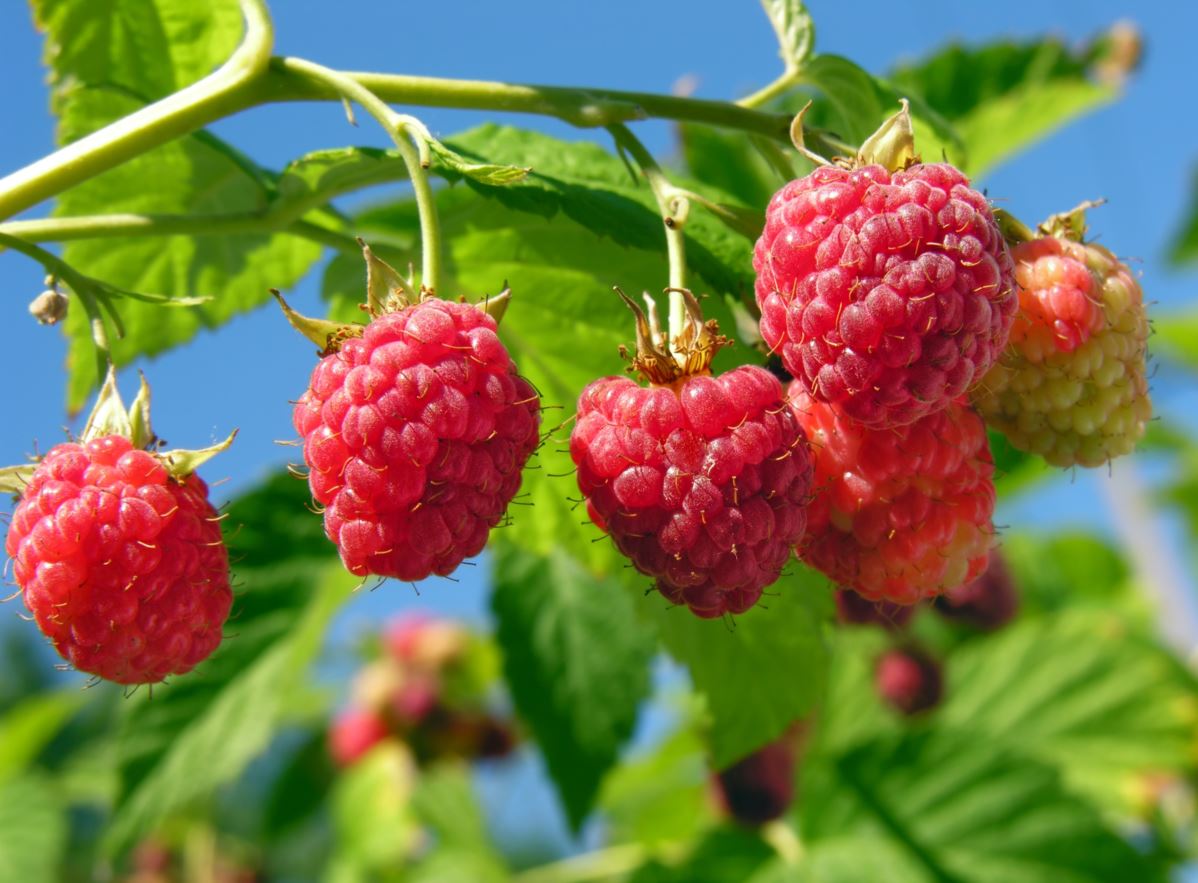Role of Magnesium in raspberry production
- Chlorophyll synthesis
- Enzymatic reactions involved in phosphate transfer
- Carbohydrate metabolism and transport from leaves to upper parts
- Synthesis of nucleic acids.
- Stimulating P uptake & transport within the plant
- Magnesium helps to increase yields through interaction with potassium
Magnesium removal by red raspberries (kg/ha)
Removal in pruned canes | Removal in fruit at 4MT/ha | Total removal from 1 ha at yield of 4 MT/ha | Total removal from 1 ha at yield of 8 MT/ha | Total removal from 1 ha at yield of 12 MT/ha |
| 3.5 | 2.0 | 5.5 | 7.5 | 9.5 |
Source: Nutrient Management in Raspberry & Blueberry, Oregon, 2013
As magnesium is a rather mobile element in the plant, the symptoms appear firstly in the older (lower) leaves, because the plant tends to pass its Mg from the old leaves to the younger ones.
- Leaves get paler
- Interveinal areas turn yellow to red, while veins remain green. This symptom starts from the leaf margins inwards
- Leaves become stiff and brittle
- In severe cases, leaves die and drop off
- Slow growth
- Defective buds are produced, which do not develop to their normal full extent
- Leaf analysis is a helpful means for identifying magnesium deficiency in raspberries
Mg status by leaf analysis
leaf analysis should be carried out every other year, alternating with soil analyses.
| Deficient | Sub-optimal | Optimum | Above- optimum | Excess |
(% in dry matter) | ||||
< 0.25 | 0.25 – 0.4 | 0.4 – 0.5 | 0.5 – 0.7 | >0.7 |
Mg application rates
Recommended Mg application rates considering soil Mg status.
Reference: British Columbia, Canada, 2012.
Soil Mg rating |
Soil test results: | Application recommendation (kg/ha) |
| Very low | 0-25 | 40 |
| Low | 26-50 | 25 |
| Medium | 51-100 | 20 |
| High | 101-150 | 0 |




